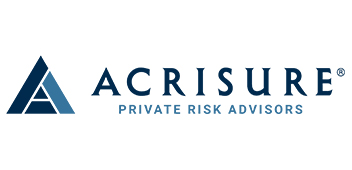Hidden risks abound. For affluent families, this can mean unwanted financial exposure. A simple risk assessment can go a long way to closing these gaps.
A fast-spreading wildfire leaves a landowner with a swath of destruction and insufficient insurance to cover the damage. A yacht owner discovers her liability policy isn’t enough to shield against the injuries that a guest sustains after slipping and falling on deck. Families with multiple residences may not have adequate coverage because they are located in different states.
Manage your Wealth
Affluent families use sophisticated investment, trust and estate-planning strategies to preserve their wealth for future generations, yet they are often ill-prepared for the possibility of a lawsuit, property damage or loss of valuable possessions—risks that can deal a bigger financial setback in the long run than a bear-market decline in their portfolio.
Insurance can be a useful risk-mitigation tool, not just for homes and vehicles, but also for art and collectibles, household staff and even certain activities, such as board membership. For wealthy families, it’s important to identify the risks they commonly face and how they can remedy any coverage gaps.
Assessing Liabilities
Consider the family with vacation property in a forested area. It wasn’t until the wildfire neared their house that the owner realized their policy left them vulnerable to fire damage. While the house was spared, their substantially scorched grounds were uninsured.
This scenario is more common than you might think. Regular auto and home policies usually cap liability at around $500,000. Beyond that, families can find themselves exposed to a major financial burden.
What’s more, many affluent families may take a piecemeal approach to insurance, relying on multiple agents in different locations to insure each new home, car or boat. This can also create overlapping coverage, as well as unintended gaps. Affluent families may also lack umbrella liability insurance, which covers claims in excess of regular auto, home and watercraft insurance, leaving them further exposed.
Identifying Hidden Risks
Here are some areas where coverage gaps could leave affluent families exposed to risks they may have never considered:
Household Staff: Many affluent families employ drivers, housekeepers, nannies and other household staff, but lack protection against lawsuits for discrimination, harassment and wrongful termination. A disgruntled former employee may be tempted to go after the former employer in the hopes of a swift payout. Since homeowner and worker-compensation insurance don’t cover such liability, additional coverage would be needed.
Volunteer Activities: Nonprofit directors may want to consider liability coverage for legal settlements, similar to the protection that directors of publicly traded companies have. A liability policy for directors and officers can offer them that extra layer of defense for their private assets, while covering their board activities, as well as the organization overall.
Paintings and More: Art and collectibles are another area where it’s easy to overlook gaps in coverage. For example, an appraised painting may be covered for hanging on a wall, but it may not have coverage for sun or mold damage, or flood damage that may happen while it hangs in that spot. The painting may need extra coverage for being moved to a new location, storage or loan for display.
Prized Vehicles: An antique car, a yacht or a private plane may have just enough insurance to render them operational. But other considerations, for a yacht, for example, may include extra coverage for crew members, fire at sea or any valuable art or collectibles decorating the cabins. Plane policies may need to include hangar and private-airstrip coverage or exclusions for those who operate and maintain the equipment.
Getaways: Vacation properties may need their own liability coverage, especially given locations in different states, and if other family members have access when the owner isn’t on the premises. Liability coverage can be bundled across all properties to maximize pricing leverage. If the property is a co-op or a condo, it may need extra coverage, in case of water or other damage to adjacent units in the building.
Make Time to Review
Sometimes, it makes sense to have a risk-mitigation expert come in and evaluate a family’s coverage. The sale of a small business can mean scaling back or consolidating coverage, for example, but joining the board of a nonprofit or agreeing to hold more charitable events on your property could be cause for increasing coverage.
Specialized property and casualty risk advisors can help families sort through their various policies and seek to bundle them to reduce costs and negotiate preferred terms. Bundling policies may also be a good way to coordinate renewal dates and premium payments, as well as to streamline claims processing.
These same experts can serve in other ways, including performing a property security assessment, advising on how to defend a property against natural disasters, completing risk evaluations of household staff, including background checks, and arranging security for business or personal travel abroad.
Even with outstanding coverage, a major loss or liability can be unsettling—perhaps traumatic. A well-qualified personal risk adviser should be able to work with your Morgan Stanley Financial Advisor or Private Wealth Advisor on strategies to help reduce the likelihood of a loss or lawsuit.
Source: https://www.morganstanley.com/articles/preserving-wealth-through-risk-mitigation

